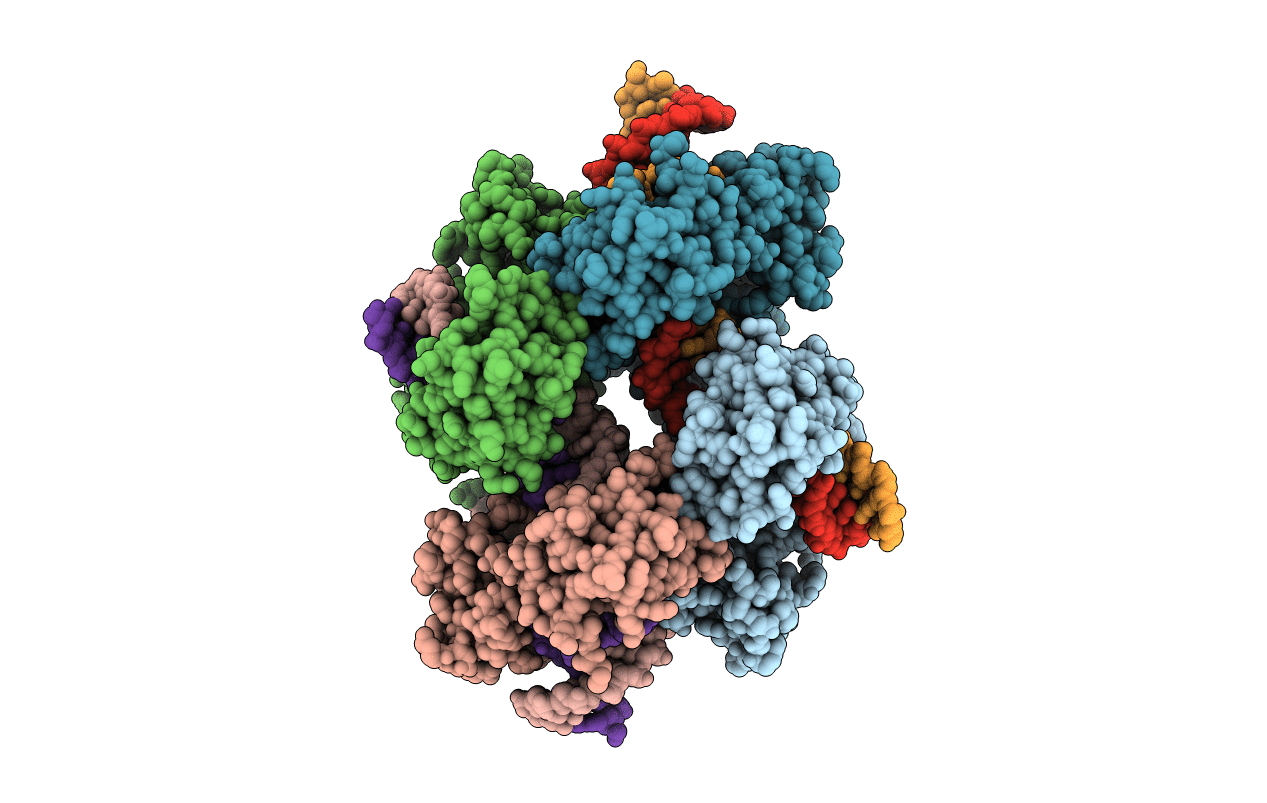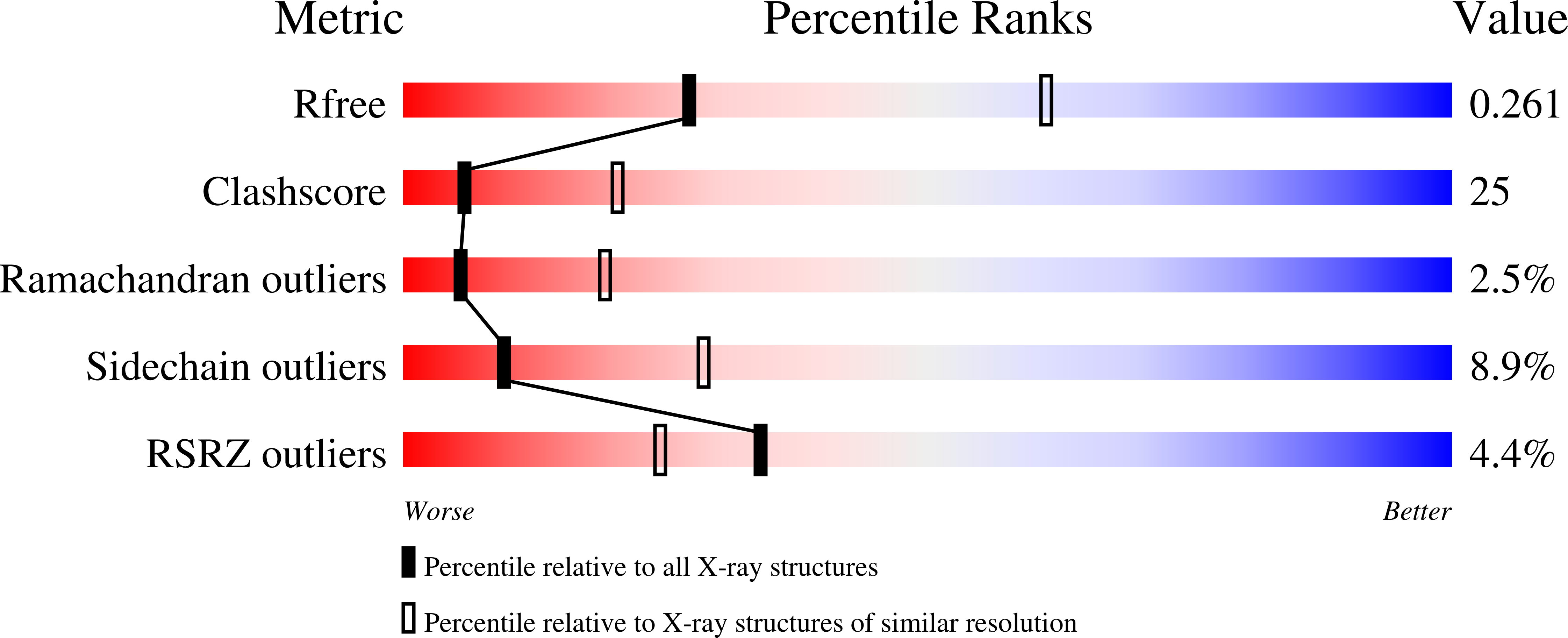
Deposition Date
2005-06-27
Release Date
2006-05-02
Last Version Date
2024-02-14
Entry Detail
PDB ID:
2A3V
Keywords:
Title:
Structural basis for broad DNA-specificity in integron recombination
Biological Source:
Source Organism:
Vibrio cholerae O1 biovar eltor str. N16961 (Taxon ID: 243277)
Host Organism:
Method Details:
Experimental Method:
Resolution:
2.80 Å
R-Value Free:
0.26
R-Value Work:
0.23
R-Value Observed:
0.23
Space Group:
C 2 2 21


